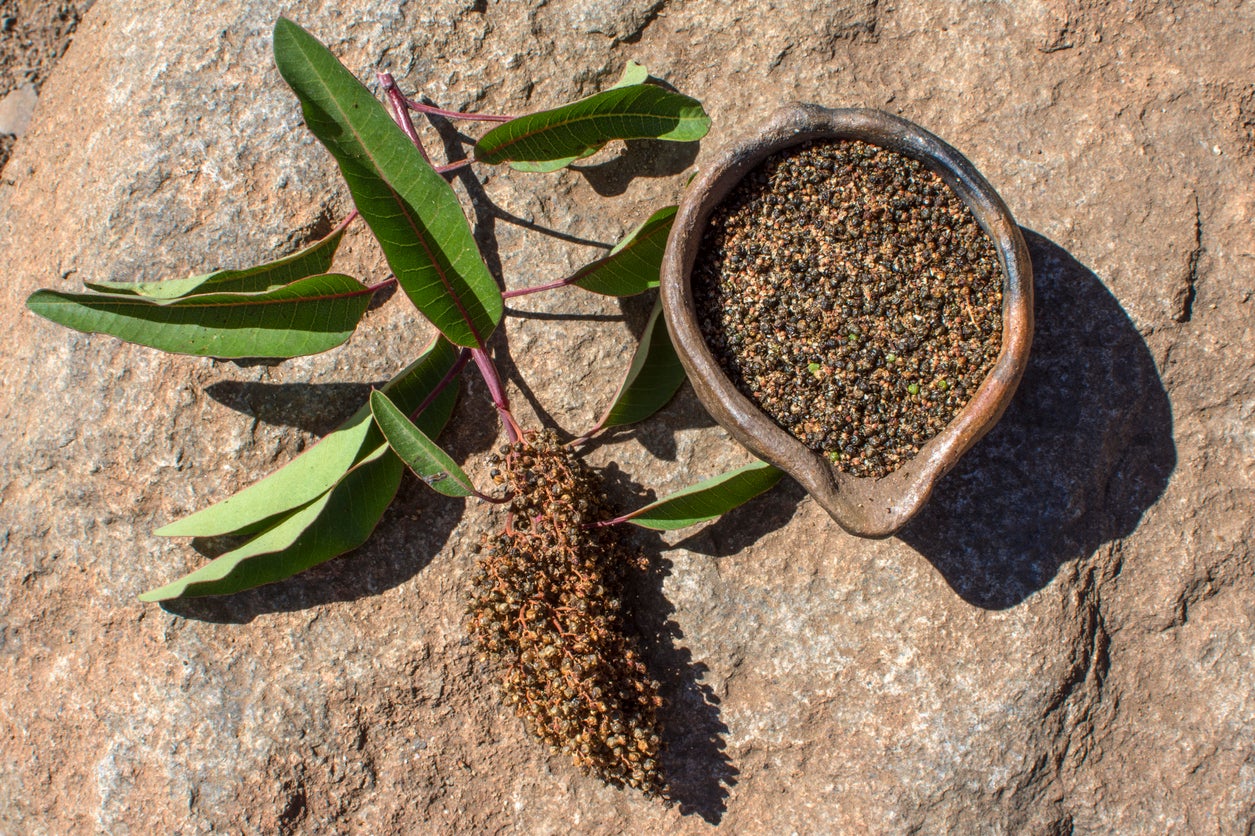Laurel Sumac Care – How To Grow A Laurel Sumac Shrub


An easy-care shrub in its native growing area, laurel sumac is a great choice for those looking for an attractive plant that’s both carefree and tolerant of wildlife. Let’s learn more about this fascinating bush.
What is Laurel Sumac?
Native to North America, laurel sumac (Malosma laurina) is an evergreen shrub found in the coastal sage and chaparral along the coasts of Southern California and the Baja California Peninsula. The plant was named for its resemblance to bay laurel, but the two trees are unrelated.
Laurel sumac reaches heights of 15 feet (5 m.). Clusters of tiny white flowers, similar to lilacs, bloom in late spring and summer. The leathery, fragrant leaves are shiny green, but the leaf edges and tips are bright red year-round. Clusters of tiny white fruit ripen in late summer and remain on the tree well into winter.
Laurel Sumac Uses
Like many plants, laurel sumac was put to good use by Native Americans, who dried the berries and ground them into flour. A tea made from the bark was used to treat dysentery and certain other conditions.
According to California history, early orange growers planted trees where laurel sumac grew because the presence of laurel sumac guaranteed the young citrus trees wouldn’t be nipped by frost.
Today, laurel sumac is used mostly as a landscape plant in chaparral gardens. This drought-tolerant shrub is attractive to birds, wildlife, and beneficial insects. It generally isn’t damaged by deer or rabbits either.
How to Grow a Laurel Sumac
Growing laurel sumac is easy in the mild climates of USDA plant hardiness zones 9 and 10. This plant is not frost-tolerant. Here is some basic growing information for laurel sumac care:
Gardening tips, videos, info and more delivered right to your inbox!
Sign up for the Gardening Know How newsletter today and receive a free copy of our e-book "How to Grow Delicious Tomatoes".
Nearly any soil works well for growing laurel sumac, including clay or sand. Laurel sumac is happy in partial shade or full sunlight.
Water laurel sumac regularly throughout the first growing season. Thereafter, supplemental irrigation is needed only when summers are particularly hot and dry.
Laurel sumac generally requires no fertilizer. If growth seems weak, provide a general-purpose fertilizer once every year. Don’t fertilize in late summer or fall.

A Credentialed Garden Writer, Mary H. Dyer was with Gardening Know How in the very beginning, publishing articles as early as 2007.
-
 What Is A Pollinator Garden? Grow Gorgeous Blooms While Benefiting Your Local Ecosystem
What Is A Pollinator Garden? Grow Gorgeous Blooms While Benefiting Your Local EcosystemPollinator gardens look great and also provide a diverse ecosystem that benefits your local pollinating insects and animals. Get started today with this guide!
By Bonnie L. Grant
-
 5 Tough Urban Trees That Thrive In Cities – Top Picks For Urban & Suburban Landscapes
5 Tough Urban Trees That Thrive In Cities – Top Picks For Urban & Suburban LandscapesExplore the best urban trees that will add value to even the most challenging of landscapes. Get growing with these ideas and enjoy all the benefits of trees.
By Teo Spengler